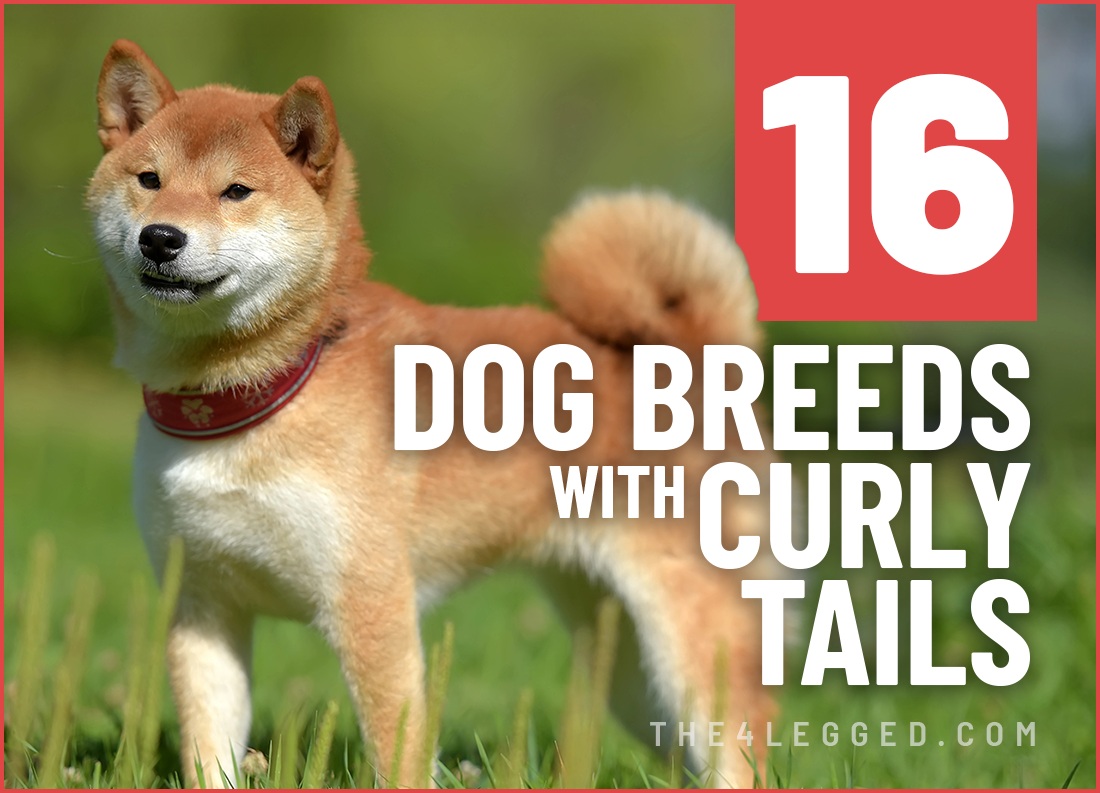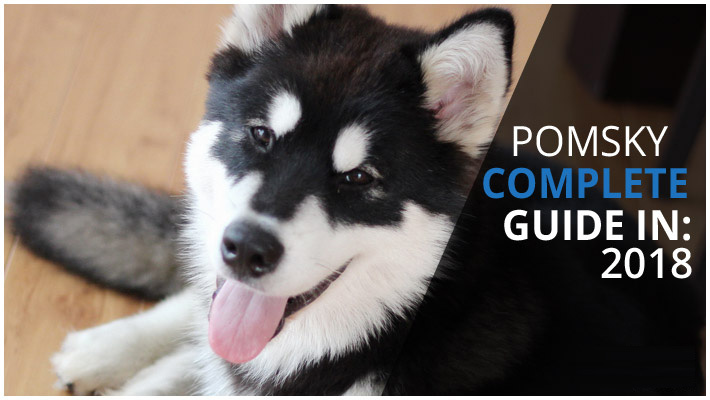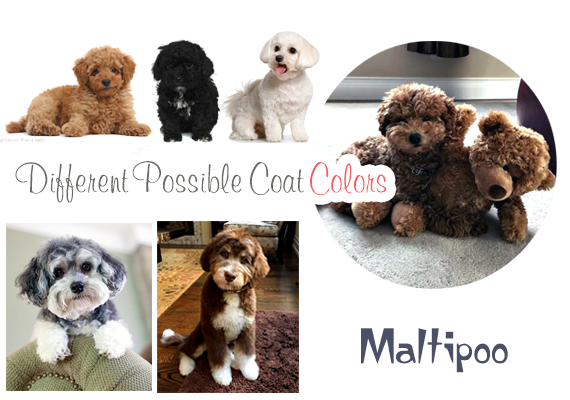When it comes to dog traits that instantly capture attention, curly tails are right up there with floppy ears and soulful eyes. There’s just something adorable and cute about a tail that curls proudly over a dog’s back, giving these breeds a charming and often regal appearance.
In this guide, we’ll explore some of the most popular and distinctive dog breeds with curly tails from ancient hunters to modern family companions. Whether you’re considering adopting a new pup with a playful and affectionate nature or just curious about canine quirks, this roundup of dogs with curly tails is bound to intrigue you.
Key Takeaways
- Curly tails in dogs result from unique wedge-shaped tail vertebrae, creating a variety of curl styles that add charm and character to many breeds.
- Many curly-tailed breeds come from cold climates, where the curled tail helps conserve warmth and serves practical and communicative purposes.
- Popular curly-tailed breeds like the Pug, Shiba Inu, and Samoyed have distinct personalities and grooming needs, so consider lifestyle and care requirements when choosing your companion.
What Makes a Dog’s Tail Curly?
Curly tails are a result of genetics specifically the shape and structure of the vertebrae in a dog’s tail. Dogs with curled tails often have wedge-shaped vertebrae that cause the tail to curve or spiral. These vertebrae are called hemivertebrae and resemble wedges, stacking together to create the characteristic curl.
These curly tails come in different styles:
- Tightly curled like a spring (e.g., Pug)
- Tightly coiled corkscrews with a rounded, compact appearance (e.g., some Bulldogs)
- Plume-like curls over the back (e.g., Samoyed)
- Corkscrew curls with multiple loops (e.g., Basenji)
- Loosely curled shapes that are more relaxed and rounded, showing greater flexibility (e.g., Shiba Inu)
Curly tails can have more flexibility in their movement and shape due to the wedge shaped vertebrae stack, allowing for a range of tightly coiled to loosely curled forms.
They’re especially common in spitz-type breeds and dogs originally bred for cold climates, where a curled tail could help protect the nose during sleep.
Top Dog Breeds with Curly Tails
Let’s take a look at 16 amazing dogs with curly tail features that make them stand out.
1. Basenji
This ancient African breed is famously “barkless,” producing yodel-like sounds instead of traditional barking. The Basenji is easily recognized by its wrinkled forehead and expressive, human-like facial features. Its tightly curled corkscrew tail gives it a unique silhouette. The Basenji shares many characteristics with wild dogs, such as alertness, independence, and hunting instincts. Intelligent and independent, the Basenji makes a loyal companion for experienced dog owners. Basenjis are alert dogs and tend to bond closely with their owners.
2. Shiba Inu
The Shiba Inu is a compact Japanese breed with a thick double coat and a proud, high-set tail that curls tightly over the back. It’s a bold, spirited breed known for its fox-like looks and strong sense of independence.
3. Pug
Few dogs are as charming as the Pug. Pugs were once prized companions of China’s ruling families, valued for their affectionate nature and unique appearance. Their double-curled tails and wrinkled faces are trademarks of this affectionate, playful breed. Despite their small size, Pugs have big personalities and adapt well to family life.
4. Akita
Akitas are among the most impressive large dogs with curly tails, serving as powerful protectors with a gentle side for those they love. Their thick curled tails are carried high and tight over their backs. Originating from Japan, Akitas are brave, dignified, and deeply loyal.
5. Chow Chow
Often described as having a distinctive lion-like mane, the Chow Chow’s dense coat and fluffy curled tail are iconic. While they may be aloof with strangers, Chow Chows are incredibly devoted to their families.
6. American Eskimo Dog
This stunning white-coated breed has a bushy tail that arches over its back. Energetic and alert, American Eskimo Dogs thrive in active households and love learning new tricks.
7. Norwegian Elkhound
Originally bred for hunting large game, including wolves and bear, the Norwegian Elkhound sports a tightly curled tail and a thick silver-gray coat. They’re fearless, friendly, and make excellent watchdogs.
8. Finnish Spitz
Known for their fox-like appearance and cheerful bark, Finnish Spitz dogs have thick coats and curled tails. They’re the national dog of Finland and are excellent family pets.
9. Pomeranian
Don’t let their size fool you—Pomeranians are feisty, confident, and full of energy. Originally, Pomeranians were bred as working dogs, performing tasks before becoming popular companions. Their high-set, fluffy tails curl perfectly over their backs, adding to their dramatic flair.
10. Keeshond
Often called the “Smiling Dutchman,” the Keeshond is a friendly spitz breed with a luxurious coat and curled tail. They’re affectionate, intelligent, and great with kids.
11. Norwegian Buhund
This versatile herding dog, one of the classic herding dogs known for its tightly curled tail, has a thick coat. Friendly and intelligent, the Norwegian Buhund excels in active homes where they can get plenty of exercise.
12. Samoyed
Famous for their “Sammy smile,” these gentle giants have lush, curled tails and dense white coats. Bred for sled pulling and herding, Samoyeds are affectionate and sociable, and are especially good with children.
13. Eurasier
Eurasiers are calm, loving companions with a balanced temperament. Their thick, curled tails and soft coats make them physically stunning and emotionally rewarding dogs.
14. Coton de Tulear
These small, fluffy dogs, known as Coton de Tulear, have curled tails and cotton-like coats. They’re happy, clownish companions who love being close to their humans.
15. Alaskan Malamute
This powerful working breed is one of the most powerful dogs, known for its broad head and large curled tail that arches gracefully over its back. Alaskan Malamutes are loyal, strong, and love cold weather adventures.
16. Siberian Husky
While not always tightly curled, the Siberian Husky’s tail often arches over the back, especially when alert or relaxed. Known for endurance and friendliness, Huskies are great for active owners.
Why Do Some Dogs Have Curly Tails?
Curly tails developed in many breeds through evolution and selective breeding. In colder regions, dogs would curl up with tails over their noses to conserve warmth—like a natural face blanket!
Other reasons for curly tails include:
- Visual signaling (especially in herding breeds, which use their tails to signal to livestock and other animals)
- Breed-specific aesthetics (as seen in show standards)
- Genetic mutations specific to tail vertebrae
The rest of the tail, beyond the tailbone, also plays a role in certain breeds’ anatomy and function, contributing to their ability to interact with livestock and other animals.
Grooming and Care for Dogs with Curly Tails
Furry breeds with dense fur, especially those with curly tails, require extra grooming attention. Dogs with curly tails often have thick or long coats, so regular grooming is essential to avoid matting—especially under the tail where tangles can form.
Tips:
- Brush at least 2–3 times per week (daily for long-haired or particularly furry breeds like Pomeranians or Samoyeds)
- Wipe and check under the tail to prevent infections
- Trim fur around the base of the tail as needed
Choosing the Right Curly-Tailed Companion
Curly-tailed dogs come in all sizes and temperaments, each with unique breed characteristics. Consider the following when choosing one:
- Lifestyle: Do you want a lap dog (Pug, Coton) or a working dog (Husky, Akita)?
- Grooming needs: Some breeds require more upkeep than others.
- Temperament: Are you looking for a loyal guard dog, a cuddly lap dog, or a playful companion?
With the right match, a dog with a curly tail will become a beloved part of your family.
Summary
Curly tails may look charming and whimsical, but they often tell a deeper story about a dog’s heritage, purpose, and personality. From snowy spitz breeds to compact companion dogs, each curly-tailed pup brings its own unique traits to the table. Whether it’s warmth, communication, or just sheer cuteness, that distinctive curl plays more than just a cosmetic role.
Want to explore more unique dog traits, behaviors, and breed histories? Browse our other articles to uncover the fascinating details behind your favorite dogs and learn something new with every read.
Frequently Asked Questions
What causes a dog’s tail to curl?
A curly tail is caused by the structure of the tail vertebrae, which can be wedge-shaped or misaligned in a way that creates a curl or spiral. It’s a hereditary trait found in many breeds.
Are all curly-tailed dogs from cold climates?
Not all, but many curly-tailed breeds, like the Samoyed and Alaskan Malamute, do originate from colder regions where the curled tail served a practical function keeping the nose warm during sleep.
Can a straight-tailed dog develop a curly tail later in life?
No. Tail shape is determined by genetics and is visible early in life. If a tail changes shape suddenly, it may be due to injury and should be checked by a vet.
Are curly-tailed dogs harder to groom?
It depends on the breed. Dogs with long or dense coats (e.g., Pomeranians) may need extra grooming to prevent mats under the tail, while short-haired breeds (e.g., Pug) require minimal maintenance.
What is the most popular dog breed with a curly tail?
The Shiba Inu and Pug are among the most popular breeds with curly tails, thanks to their compact size, loyal nature, and quirky personalities.



